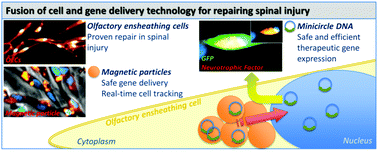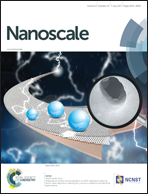A fusion of minicircle DNA and nanoparticle delivery technologies facilitates therapeutic genetic engineering of autologous canine olfactory mucosal cells†
Abstract
Olfactory ensheathing cells (OECs) promote axonal regeneration and improve locomotor function when transplanted into the injured spinal cord. A recent clinical trial demonstrated improved motor function in domestic dogs with spinal injury following autologous OEC transplantation. Their utility in canines offers promise for human translation, as dogs are comparable to humans in terms of clinical management and genetic/environmental variation. Moreover, the autologous, minimally invasive derivation of OECs makes them viable for human spinal injury investigation. Genetic engineering of transplant populations may augment their therapeutic potential, but relies heavily on viral methods which have several drawbacks for clinical translation. We present here the first proof that magnetic particles deployed with applied magnetic fields and advanced DNA minicircle vectors can safely bioengineer OECs to secrete a key neurotrophic factor, with an efficiency approaching that of viral vectors. We suggest that our alternative approach offers high translational potential for the delivery of augmented clinical cell therapies.



 Please wait while we load your content...
Please wait while we load your content...